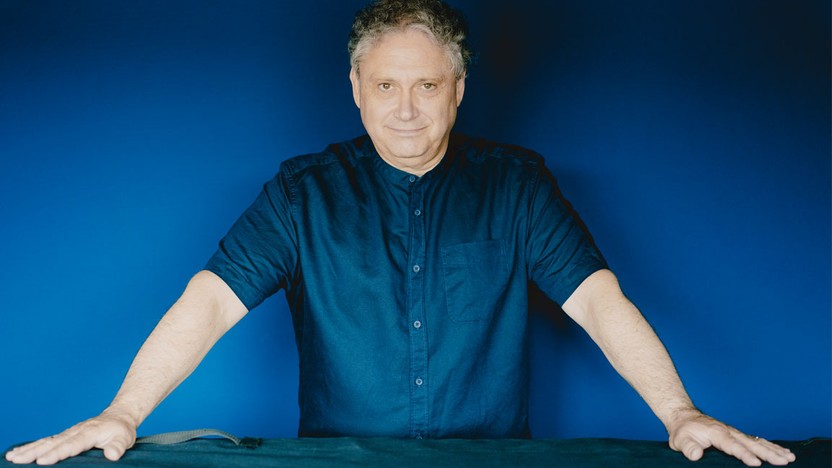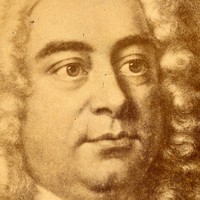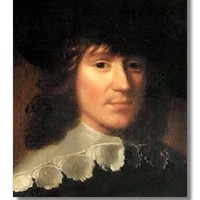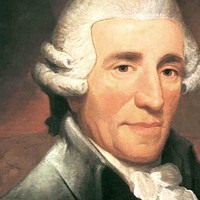Haydn’s Clock Symphony with Richard Egarr



The German-born George Frideric Handel found his greatest fame in England, but he got there by first mastering Italian opera. After working for the opera orchestra in Hamburg, Germany, he left for Italy to learn firsthand from the trendsetting composers in Rome, Florence and other musical hotspots, until he capitalized on his relationship with the royal House of Hanover (Germans who would come to rule England, starting with King George I) to write and present Italian operas in London. Handel’s shrewd business sense matched his brilliance as a composer, and he always knew how to give audiences what they wanted — even if it required recycling his greatest hits or “borrowing” liberally from his competitors.
In the case of the six concerti grossi published as Handel’s Opus 3 in 1734, any blame for shady behavior seems to belong to John Walsh, Handel’s London publisher who went behind the composer’s back to capitalize on the popularity of the concerto grosso style perfected by Arcangelo Corelli. The mishmash of scores that Walsh pulled together dated back decades, representing a range of styles and formats, and it even included selections that Handel didn’t write.
The essence of the concerto grosso format is to have a small group of solo instruments working in concert with a larger ensemble, usually consisting of strings and basso continuo—the semi-improvised, Baroque equivalent of a jazz “rhythm section” that anchors the bass line and fills in the harmonies. In the Concerto Grosso in B-flat Major printed first within Opus 3, the biggest mystery is why it never returns to the listed home key, instead staying in G-minor for the latter two movements. (A manuscript of the concerto in this same form predates Walsh’s publication by at least a decade, so in this case we can’t blame him for tinkering.) Oboes and violin take the starring role in the outer movements, with bassoons jumping in during the finale with some virtuosic solo turns of their own. It might seem incongruous that two flutes (originally recorders) only participate in the solemn slow movement that hints at a French style, but in Handel’s day woodwind players were expected to be generalists, and so those parts could have been played by the otherwise unoccupied second oboe and bassoon.
Aaron Grad ©2022

When George Frideric Handel recognized that British audiences were losing interest in Italian opera, he abandoned the genre that had made him famous and pivoted to a new business model. Spectators wanted music that they could understand and relate to, and so instead of unintelligible Italian, Handel began to compose in his adopted language of English, inventing a new genre that matched the scope of opera with its soloists, chorus and orchestra. Like the Italian oratorios that inspired him, Handel intended these works to be performed as concert pieces, with the orchestra onstage, and without sets or costumes — a structure that made them ideal for the Lenten season when theater was prohibited.
Biblical tales from the Old and New Testaments gave the audiences familiar plots and plenty of drama, like when Handel adapted the story of Solomon, the wise king of Israel who ruled after his father, King David. The oratorio gets spicier in the third act when the Queen of Sheba comes to visit, heralded by this sinfonia that uses exposed passages for oboes to evoke a ceremonial atmosphere.
Aaron Grad ©2022

Born into a musical family, Henry Purcell spent his boyhood in London as a chorister for the Chapel Royal. At eighteen he was appointed to a position as a court composer, and two years later he became the organist for Westminster Abbey, a position he held for the rest of his life. During the reigns of Charles II and James II, Purcell’s royal duties accounted for most of his music, but his court responsibilities shrunk in the wake of the Glorious Revolution of 1688. Only in the last seven years of his short life did Purcell concentrate on the theater music for which he is best known today, including Dido and Aeneas and The Fairy Queen.
The set of nine Fantasias in four parts that Purcell composed between June and August of 1680 were structured for a viol consort, an ensemble that had been a fixture of the King’s Private Musick since the mid-sixteenth century. Like the members of the violin family, viols are bowed string instruments that range from a small treble viol to the deep violone; unlike violins, viols have frets tied around the fingerboard, flat backs instead of arched, and they are always held upright, like a cello. Purcell was one of the last composers to write for the disappearing viols, and these Fantasias may have been primarily undertaken as exercises for the 20-year-old, modeled after an earlier compositional style.
The premise of a Fantasia or “Fancy” was to introduce a melody and then elaborate upon it freely using imitative counterpoint. The Fantasia No. 11 in A Minor begins in a slow and ornate manner that becomes increasingly dense and dance-like with cascades of falling figures and a concluding section in a quick tempo. The Fantasia No. 13, also known as the Fantasia Upon One Note, makes a game out of holding one inner voice steady throughout on the note C, enduring through chromatic alterations, key changes and tempo adjustments.
Aaron Grad ©2022

The English composer William Lawes was a master of instrumental music in the early Baroque era. Whereas his brother Henry developed a reputation as a top songwriter, William specialized in music for viol consort and other ensembles. He spent his most productive years working for King Charles I, which proved to be a mixed blessing; this was a monarch who was quite supportive of the arts but who was also roundly despised by his subjects, leading to civil war and ultimately his execution. Lawes himself was shot and killed during the siege of Chester, and the ensembles he wrote for soon fell out of favor, pushing his great contributions to the margins of music history.
The stylized dances that Lawes composed in his sets of music for the Royal Consort (originally scored for viols and theorbo, a bass lute) show remarkable versatility and coloristic range, especially for music that came a century before the iconic orchestral sets and dance suites composed by Bach and other masters of the mature Baroque sound. The longest and weightiest section of Sett No. 9 is the opening Pavan, a slow dance that dwells in suspended harmonies and a contrasting passage full of minor-key pathos. The final Saraband (all 30 seconds of it) is especially striking with its energetic three-beat pulse; later examples became much more restrained, but this early model is probably closer in spirit to the zarabanda dance that first appeared in Spain’s American colonies in the 1500s before being absorbed into the court culture of Europe.
Aaron Grad ©2022
 Listen to Audio
Listen to Audio
During his long tenure with the Esterházy family, Franz Joseph Haydn spent much of his time dutifully entertaining his patrons at a remote country estate. He encountered a vastly different environment during his two visits in the 1790s to London, a bustling city that welcomed him as a celebrity. Contrasting the lofty, refined tastes of the Austrian nobility, London audiences favored splashy and spectacular entertainment — ranging from revivals of George Frideric Handel oratorios involving hundreds of performers to popular caricatures such as The Beggar’s Opera. Haydn, in his second set of “London” symphonies, seemed to respond to English tastes by writing music with extra panache. He added the robust tone of clarinets in all but one symphony, and he incorporated flashy gestures that inspired nicknames still associated with several works: Military (Symphony No. 100), The Clock (Symphony No. 101) and Drum Roll (Symphony No. 103).
Haydn began the Symphony No. 101 in Vienna and completed it in London in 1794. Considering the adjustment period new music often endures before being embraced by the public, the immediate success Haydn achieved was remarkable, as evidenced by the review published in the Morning Chronicle two days after the premiere. The critic declared, “As usual the most delicious part of the entertainment was a new grand Overture [Symphony] by HAYDN; the inexhaustible, the wonderful, the sublime HAYDN! The first two movements were encored; and the character that pervaded the whole composition was heartfelt joy. Every new Overture he writes, we fear, till it is heard, he can only repeat himself; and we are every time mistaken.”
As with most of the “London” symphonies, No. 101 begins with a slow introduction. This subdued Adagio builds anticipation for the body of the first movement, which gallops in with five-measure phrases that spill over the expected subdivisions of four measures. The Andante movement, with the “tick-tock” flavor of its accompaniment, is responsible for the symphony’s nickname, The Clock. The graceful melody and steady accompaniment form the basis of a set of variations, including a dramatic, minor-key escapade that recalls Haydn’s Sturm und Drang (“storm and stress”) stylings from an earlier decade.
Haydn deserves credit for making the minuet an indispensable component of the symphony, expanding the structure from earlier three-movement models. This minuet is one of his richest, with a full-throated scoring that includes trumpets and timpani. In the contrasting trio section, a running motive recalls the main theme of the first movement.
The finale packs a typical Haydn punch: it throttles back to just strings in a piano dynamic for the first fifty-five measures, and then unleashes the full forte power of the orchestra right at a major point of arrival, with the last note of the earlier phrase doubling as the first note in a new motive. The same dovetailing trick binds another quiet string passage to an even bolder mood change, with a sudden shift to the minor key blasted by the entire ensemble at a fortissimo dynamic. Later, a hushed fugue volleys among the string sections on the way to a grand arrival, ushering in one last statement of the main theme.
Aaron Grad ©2022
All audience members are required to present proof of COVID-19 vaccination and booster shot, or a negative COVID-19 test within 72 hours prior to attending this event. Non-cloth masks (N95, KN95, KF94 or surgical masks) are required regardless of vaccination status. More Information
Concerts are currently limited to 50% capacity to allow for distancing. Tickets are available by price scale, and specific seats will be assigned and delivered a couple of weeks prior to each concert — including Print At Home tickets. Please email us at tickets@spcomail.org if you have any seating preferences or accessibility needs. Seating and price scale charts can be found at thespco.org/venues.
Get driving directions and find nearby parking.
Find dining options close to the venue.
View seating charts to find out where you'll be seating.
SPCO concerts are made possible by audience contributions.
For exclusive discounts, behind-the-scenes info, and more:
Sign up for our email club!
